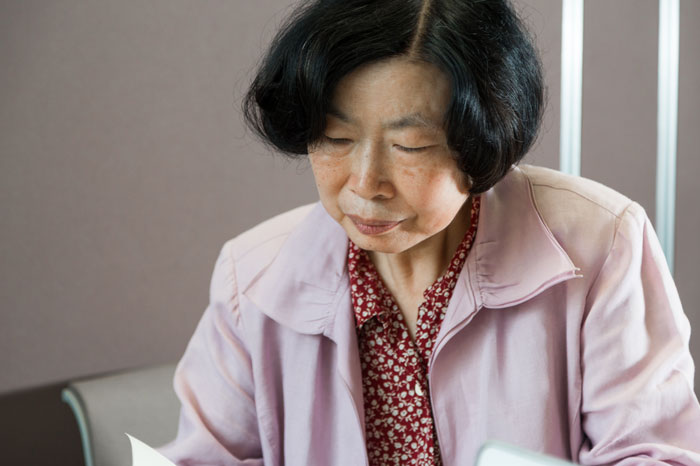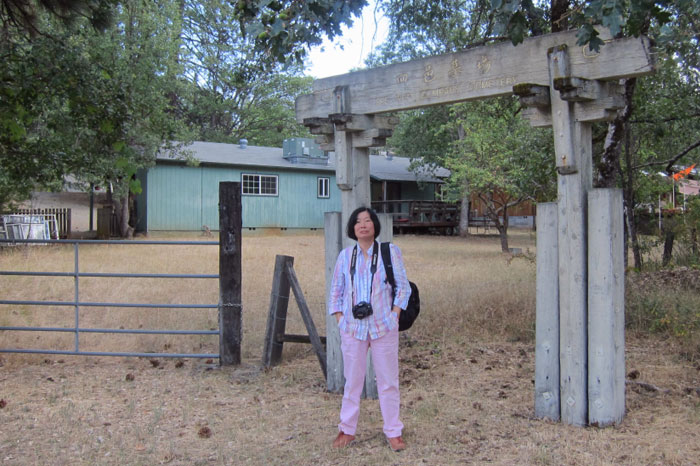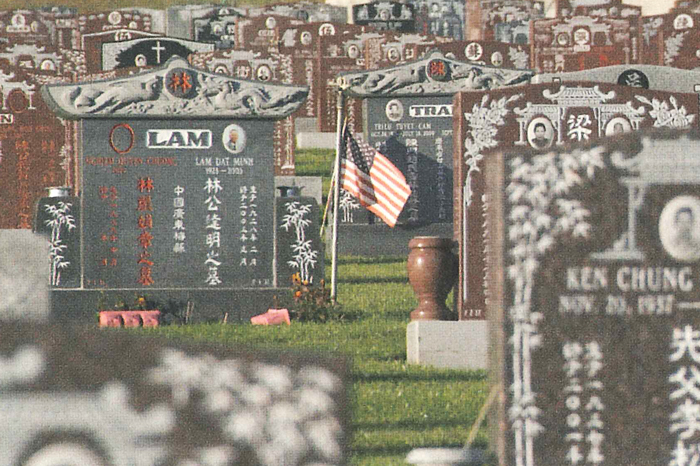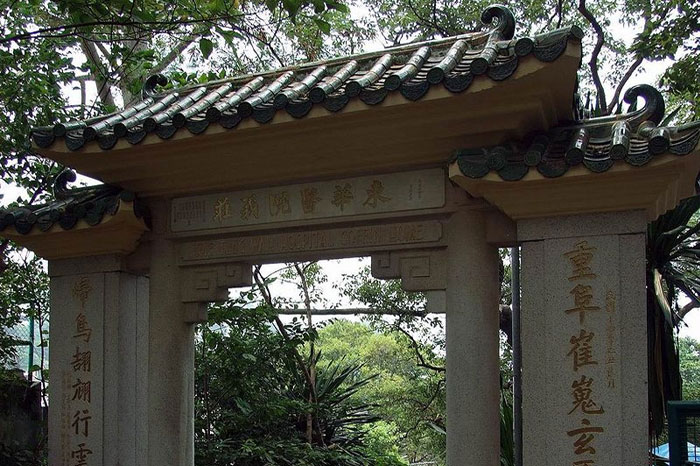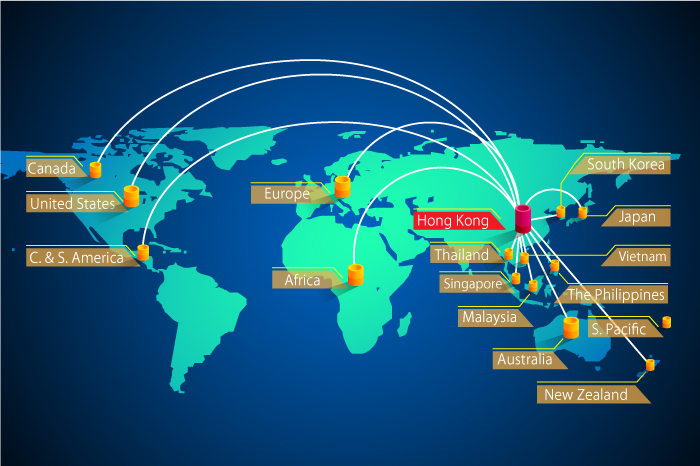
Learning Lessons from the Grave: The remains of Chinese emigrants produced a paper trail of the modern Chinese world
August 2015
It is through the bones of the dead that we will understand the lives of the living, according to CUHK historian Yip Hon-ming, chairwoman of the Department of History. By delving into the archives of the Tung Wah Coffin Home, she has tracked the development of modern Chinese trade routes and documented the network of Chinese emigration.
Her research also shows the seminal role that Hong Kong played at the turn of the 20th century, becoming the commercial capital of the spreading Chinese world as emigrants chased fortunes far from home.
“There's a network of remittances, a network of business,” Professor Yip notes. “It's a network of logistics that facilitated many things, and also a network of culture and tradition.”
The trade links expedited the movement of money, goods, personnel and information. They also ensured Chinese people the world over shared traditions, social links and a legal system.
The origin of her research is the vast amount of paperwork generated by the repatriation of the coffins and bones of Chinese emigrants who died abroad. There were overseas-benevolent associations dotted around all the major destinations for Chinese migrants facilitating this process.
Some 100,000 sets of coffins or bones made their way back to China over the first half of the 20th century, via Hong Kong. The bulk came from California, Canada and Australia – all the subject of gold rushes in their time.
The custom of “second burial” in southern China traces back to the nation's earliest history. A body is buried after death but then exhumed after five, seven or 10 years, depending on tradition, so that the bones can be cleaned and then arranged in a specific pattern in a box or urn. The practice remains strong to this day in Hong Kong's New Territories.
Overseas Chinese adopted the custom, mainly to repatriate the remains of their relatives to their home town to be reburied in ancestral graveyards. It was particularly important for emigrants out of China to return home after they died.
“You have to be worshiped after your death by your descendants, otherwise it's unthinkable,” Professor Yip said. “You will be a lone ghost, a lonely soul, especially if you are wandering in a strange land.”
When emigrants first left their home towns, and if they ever returned to visit, they paid for an “exit paper.” Part of the fee went into a communal fund that would guarantee the return of their remains on a charitable basis. Grieving family members back home even received “burial money,” with the benevolent association also covering any fees for storing remains temporarily at the Coffin Home in Hong Kong as they awaited transit into the mainland.
Professor Yip's work shows how townsmen or clan associations in new host nations forged links with chambers of commerce in Hong Kong and charity associations in the home towns of the emigrants. The charitable relationship often operated alongside merchant networks that ran from China to the New World via the Tung Wah Group of Hospitals in Hong Kong, which ultimately facilitated the return of the remains via the coffin home.
Professor Yip estimates that she has gone through around 10,000 pages of material in the coffin-home archives, and thousands more pages from the hospital's records that related to the repatriation of remains. With death certificates, bills of lading, receipts and the like, the correspondence between Tung Wah and governments, overseas merchants, charitable associations and shipping companies is often incredibly detailed.
“It's a huge documentary body of material, and few people studied it before,” Professor Yip says, adding that she has substantiated the huge scale of the repatriations. “The evidence is quite impressive. A few people talked about the custom but didn't believe it was so massive.”
There was often a practical drive behind the repatriation. Many towns outlawed the burial of minorities in public cemeteries, and vandalism of their graves was common. Chinese cemeteries were almost always too small, and digging up bodies made room for subsequent generations.
Professor Yip specializes in contemporary Chinese socioeconomic history, as well as the study of Hong Kong's relations with China and its overseas networks. Her interest in Hong Kong's pivotal position in the global network of the Chinese people developed out of a project to document the Tung Wah group's activities and to celebrate the coffin home's 110th anniversary. She published a book on the topic, The Tung Wah Coffin Home and Global Charity Network: Evidence and findings from archival materials, in 2009, and produced work as part of a General Research Fund project on the topic of “Networking Charity: The Tung Wah Coffin Home and the North America-Hong Kong-Guangdong Connection”.
She has made a dozen field trips to immigrant towns in California and Canada. In the US, in Marysville, Hanford, Weaverville, Fiddletown, Locke, San Francisco and Sacramento, as well as Victoria, New Westminster and Vancouver in Canada, she has visited the benevolent and trade associations if they still exist to dig out information about the early life of overseas Chinese.
She also visited their old cemeteries. On a visit to Marysville, a California town that dubbed itself the “Gateway to the Gold Fields,” she discovered that the Chinese graves were in marginal areas of the public cemetery. In Victoria, she unearthed contemporary local newspaper reports showing that during floods, the Chinese graves opened up, coffins left strewn around when the waters receded.
Professor Yip has also visited Chinese hometowns such as Taishan and Kaiping, including the Gold Mountain Charity Cemetery in Xinhui, built in 1893 to house 387 graves from Gold Rush towns. The overseas Chinese tradition of homebound burial ended abruptly in the early 1950s when an embargo affected communication between China and the world outside. When it became impossible for the Coffin Home to repatriate remains, bones stranded at the Coffin Home ended up in Hong Kong's charitable cemeteries.
The Coffin Home always kept a very low profile, given its morbid nature and the taboos under which Cantonese people approach death, Professor Yip says. But in 2005, the home won an award of merit for its 2003-04 restoration from UNESCO, which recognized its effort in preserving “an important cultural institution”.
Professor Yip's next fieldwork will take her to Australia, dubbed the “New Gold Mountain” at the time, to eke out the final piece of the gold-rush story. She feels sure she will continue her work even in retirement. “It's going to be a lifelong project. And it's an obsession,” Professor Yip said.
By Alex Frew McMillan

